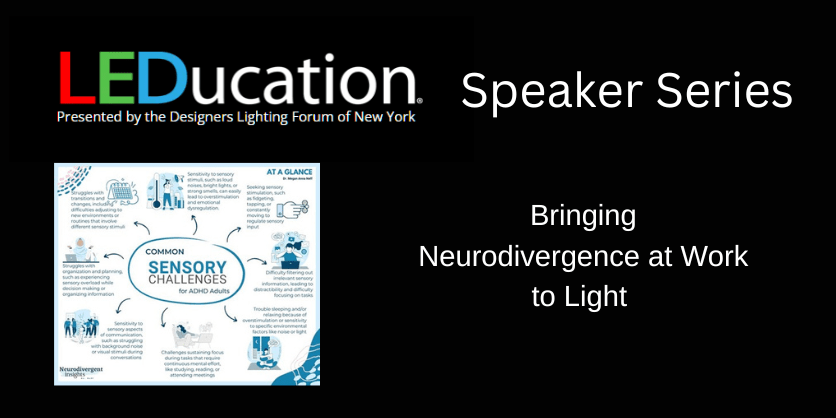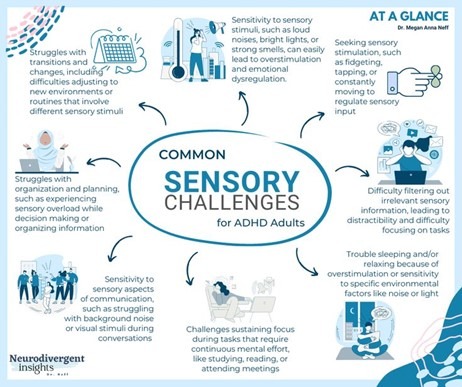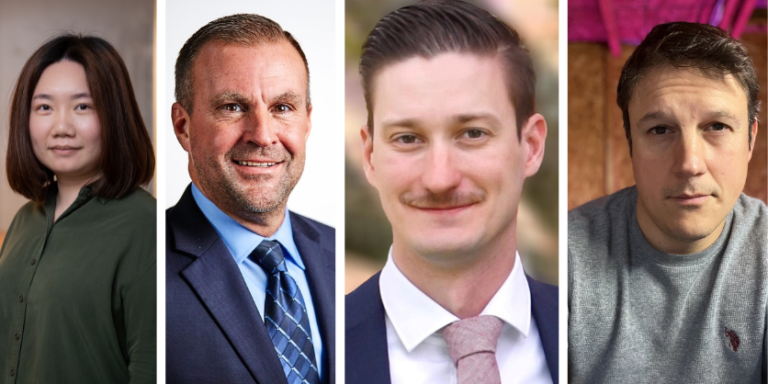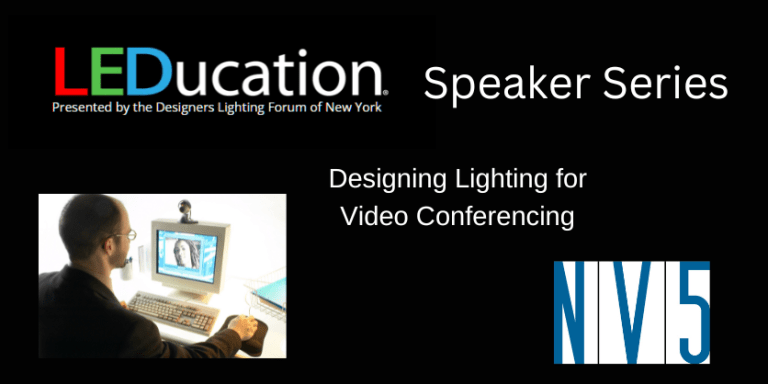LEDucation Speaker Series: Bringing Neurodivergence at Work to Light

By Dr. Matt Zakreski
I’m a full-time professional speaker and clinical psychologist who specializes in working with gifted and neurodivergent people — such as those with ADHD, Dyslexia, OCD, Autism, and gifted, etc. There’s a common misconception that neurodivergent folks are a tiny minority in society, but there are a lot more of them than you’d think. Research shows that one out of five people are neurodivergent (by the way, if you’re not neurodivergent, you’re known as neurotypical).
Think about your four best friends. If none of them are quirky, off-beat, and unusual, then… congratulations! You might be neurodivergent! And if they all are, well, neurodivergent people tend to run in packs, so you still might be part of the club.
As someone who specializes in neurodivergence, I’ve been asked to speak about these concerns on stages all over the world. And when I speak at these conferences, I’ve noticed a few things: 1) the pastries at all these conference centers always look and taste the same, 2) hotel wi-fi is never good when you want it to be, and 3) conferences are HARD for neurodivergent people.
Think about a conference or event that you’re putting on: you’re in a new place, usually with lots of people (way more than you’re used to). You’re wearing uncomfortable professional clothes and you’re on your feet a lot. You’re not eating or drinking like you normally do and likely feel off-base as a result (so much caffeine and so many carbs). Most importantly for a lot of neurodivergent people, the sensory experience of conferences is often very unpleasant: bright lights, loud sounds, unexpected tactile experiences, smoke machines, close contact with lots of strangers, etc. Specifically, I’ve had people unable to stay in the rooms where I’ve been speaking because the lights and sound have been too much. And how can you benefit from a speaker if your sensory experiences won’t let you stay in the room?
The good news is that we know a lot more about neurodivergence than we used to, especially how it impacts our sensory experiences. The question is how we take that knowledge about neurodivergence and make it into tangible supports.
Most of the systemic supports for neurodivergent people have traditionally existed within the educational system. Many neurodivergent learners need special accommodations to fully access their education — whether that’s extra time to complete tasks, working in different environments, scaffolding to get things done, and time and space to self-regulate. Those accommodations are usually implemented through an Individualized Education Plan (IEP), which is covered under the FAPE provision of the Individuals with Disabilities Education Act (IDEA).
FAPE stands for Free Appropriate Public Education, which states that all students – regardless of their learning needs – deserve equitable access to get their educational needs met (and without added financial burden). Other accommodations, including behavioral support and communication strategies in the classroom, are covered under the 504 Plan aspect of the Rehabilitation Act of 1973. 504 Plans can be used to aid kids with ADHD and Autism in addition to helping students with physical challenges, eyesight or hearing disabilities, allergies, trauma, chronic illness, and many more. If you have children, you might be familiar with these terms and systems.
As a clinical psychologist who works with many children, I spent a lot of time in IEP meetings and 504 Plan meetings because we are all working to ensure that everyone has concrete, overt strategies that allow them to learn. And even though mindset is so prevalent in the educational years of a child’s life, the supports have traditionally fallen off a cliff once a child turns 18 and leaves formal education. The American workplace has been slow to adapt these similar mindsets, but things are really starting to shift in that space — and that’s where you come in!
The framework of a 504 Plan is very similar to that within the Americans with Disabilities Act (ADA), which covers aspects of a person’s life (physical, emotional, medical, and psychological) that would interfere with their ability to live effectively. When a 504 Plan is implemented, it gives the person and the system a set of guidelines around what that person can do, can’t do, and needs help doing, while laying out groundwork for how to help them get those needs met.
For example, a common accommodation in a 504 Plan is to allow a student the ability to move around in the classroom if they need to move their body to best learn. The Human Resources version of this accommodation would be giving your employees options for a standing desk, or a swivel chair, etc. These are all probably things that are being done in your office already, but formalizing the process protects the employers and the employees (just like these Plans protect students and schools).
Common accommodations for your neurodivergent employees and attendees include:
- Voice to text software (good for those with dyslexia and dysgraphia)
- Sensory rooms (Autism, giftedness, sensory processing disorder)
- Adapting lighting, heating, air-conditioning, audio, and HVAC as sensory-friendly as possible (Autism, giftedness, sensory processing disorder)
- Making bathrooms as accessible and sensory-friendly as possible (good for everyone)
- Cloud-based schedules that can be accessed from anywhere (ADHD)
- Private offices (good for everyone)
- Working from home as needed and material that can be accessed asynchronously (by everyone and those with ADHD)
- An assistant to take care of day-to-day minutiae while they focus on big-picture concepts (those with giftedness and ADHD)
- Intentional spaces and supports for first-time/new participants so they can have specific resources for their unique journeys. (good for everyone)
But what does this have to do with conferences?
One thing that we must understand as service providers for both our employees and clients is that it doesn’t matter how good our content is if people can’t access it. If the lights at the conference are too bright for us to see the screen, then our attendees tap out.
If the workplace doesn’t allow from work from home as needed, then our employees are stretched too thin and forced to spend energy on adapting to environments when they could be spending that energy on doing their actual jobs. Environments are variables that are within our power to change in many impactful ways, and many organizations fail to realize that. But if you can optimize your environments, then you’re creating a space that becomes more accessible for everyone, so everyone learns more, learns better, and benefits from that knowledge longer.
If one out of five people are neurodivergent, that means that working with, for, and under neurodivergent adults is not an “if,” it’s a “when.” Some fields tend to draw certain types of neurodivergent folks (Autistic people in Computer Science/IT; ADHD people in marketing; dyslexic people in the arts, to name a few broad examples), but these people are in every office in every town doing basically every kind of job. And the more we understand about our colleagues and coworkers and clients who are neurodivergent, the more empowered we are to help them effectively and not lose our minds while doing it.
Here are a few common neurotypes:
- ADHD – Attention Deficit/Hyperactivity Disorder. ADHD is not just the “Hey, squirrel!” thing that it’s portrayed as in the media; it is a complex neurodevelopmental pattern of underperformance in the pre-frontal cortex (PFC) of our brain. I point ADHD out as a brain difference because there are still a lot of people out there who think that ADHD is caused by too much sugar or TikTok. The PFC is the part of our brain where our Executive Functioning skills are, which include time management, organization, impulse control, emotional regulation, task initiation, and task completion. Gosh, do you think any of those skills are necessary to be effective in the office?
- Autism – Autism Spectrum Disorder is a broad range of neurodevelopmental conditions characterized by challenges with social skills, repetitive behaviors, speech, and nonverbal communication. Autistic people (many of whom in the community prefer using ‘identity-first’ language, as opposed to ‘person with Autism’) range in functioning from remarkably gifted to drastically impaired. Autistic people come with many strengths that are as varied as any community; I promise you that they’re not all in IT! Over the past several years, there has been a huge push to employ more Autistic people, with Employee Resource Groups and special hiring companies such as Auticon and Aspirtech.
- Gifted – giftedness is much more than the really smart kid you hoped you got paired up with in Chem lab in high school. Giftedness is its own neurotype that comes with significant strengths (rapid processing, creativity, deep recall of information) and significant weaknesses (weaker social-emotional skills, an intolerance of people who don’t think/work as fast as they do). Giftedness is not a question of being “elite.” People who are gifted aren’t any better or worse than anyone else. It might be helpful to think of them as very tall; yes, tall people can do things that short people can’t, but it is a question of difference, rather than being “better.”
- Dyslexia – dyslexia is a neurodivergence that impacts a person’s ability to read and process words. Dyslexic people may struggle with reading, writing, processing sound, and phonetic awareness, but they tend to be remarkable problem-solvers and strong communicators. Think of how much of our world is based in words! If you’re going to make it as a dyslexic person, you’re basically forced to develop strong coping skills. If you play to a dyslexic person’s strengths, their creativity and resilience will undoubtedly surprise you.

Obviously, as a psychologist, I’m going to argue that serving neurodivergent people is the right thing to do morally and ethically. The cool thing is that it is also the right thing to do for the bottom line. Neurodivergent people are a HUGE untapped job market; they have skills that others might not have and perspectives that your other employees would never consider. And those resources can be tapped internally from your own employees and externally in better serving your clients and attendees.
To go back to conferences for a moment, I once spoke with a school that offered a lot of professional development to local teachers. After my speech, we reviewed the feedback from the attendees. And while they liked many things about the conference, they HATED the fluorescent bulbs in the conference center (good thing they are now getting banned, at least in 10 states. This is a lighting opportunity.) But instead of getting frustrated or hurt by that, the school researched LED lights, found that they were cheaper and more pleasant, and uncovered a state grant program that paid for the change-over for 10 years. Many people in their organization had never thought about the lighting, but many neurodivergent people have significant sensory issues. If we overcame those issues, everyone would benefit and enjoy the conference more. The LED solution not only improved the quality of life for the attendees, but also saved both the organization and the conference center money.
Diversity is what makes people great. We have different races, ethnicities, religions, creeds, sizes, shapes, genders, sexualities, and more. Let’s add neurodiversity as another piece of that beautiful mosaic. When we embrace a diversity of thought, we make the world a richer, more interesting, more inclusive, and more lucrative place. And when we understand neurodivergence and the things that we can do to accommodate those differences in a practical, accessible way, more people can benefit from what we have to offer as professionals. Then we all win!
Dr. Zakreski is speaking at this year’s LEDucation on March 18th from 4:30-5:30. His topic is “I Can’t Hear You Because My T-Shirt Is Too Itchy: Understanding Sensory Processing in Neurodivergent Learners.” The session qualifies for 1 AIA / CEU / LU credit. Click here to register.
USLT Editors’ Note
As Dr. Zakreski’s examples point out, there are opportunities that lighting specifiers, electrical contractors, and electrical/lighting distributors can pursue in the educational market when calling on schools and publicly funded higher education. A good conversation starter is to ask, “Is your lighting the most effective it can be to support the educational needs of your students?”
The discussion can go on to include lighting controls, appropriate light color, the utilization of task lighting, and the best placement for fixtures. Furthermore, should natural lighting – or circadian-effective lighting – be considered as an option if there natural lighting is not available in the office, educational, and healthcare environment?
About the author/speaker
Matthew “Dr. Matt” Zakreski, PsyD is the founder of The Neurodiversity Collective and is a professional speaker and clinical psychologist specializing in neurodivergent (gifted, 2e, ADHD, Autism, Dyslexia, etc.) people. He speaks all over the world about supporting neurodivergent people in all walks of life, from schools to college to the workplace. Dr. Matt specializes in taking knowledge of the brain, human behavior, and clinical psychology and making that accessible and practical for people to improve their lives. He is an expert at helping everyone in an organization grow in a meaningful, authentic way. Everyone deserves to have a better life; the more we know about ourselves and our brains, the better we can meet those goals.
Dr. Matt can be contacted at drmatt@theneurodiversitycollective.com or www.drmattzakreski.com
Related articles
LEDucation Speaker Series: Designing Lighting for Video Conferencing
LEDucation 2025 Opens Registration, Releases Exhibitor List & Discounted Room Rates








